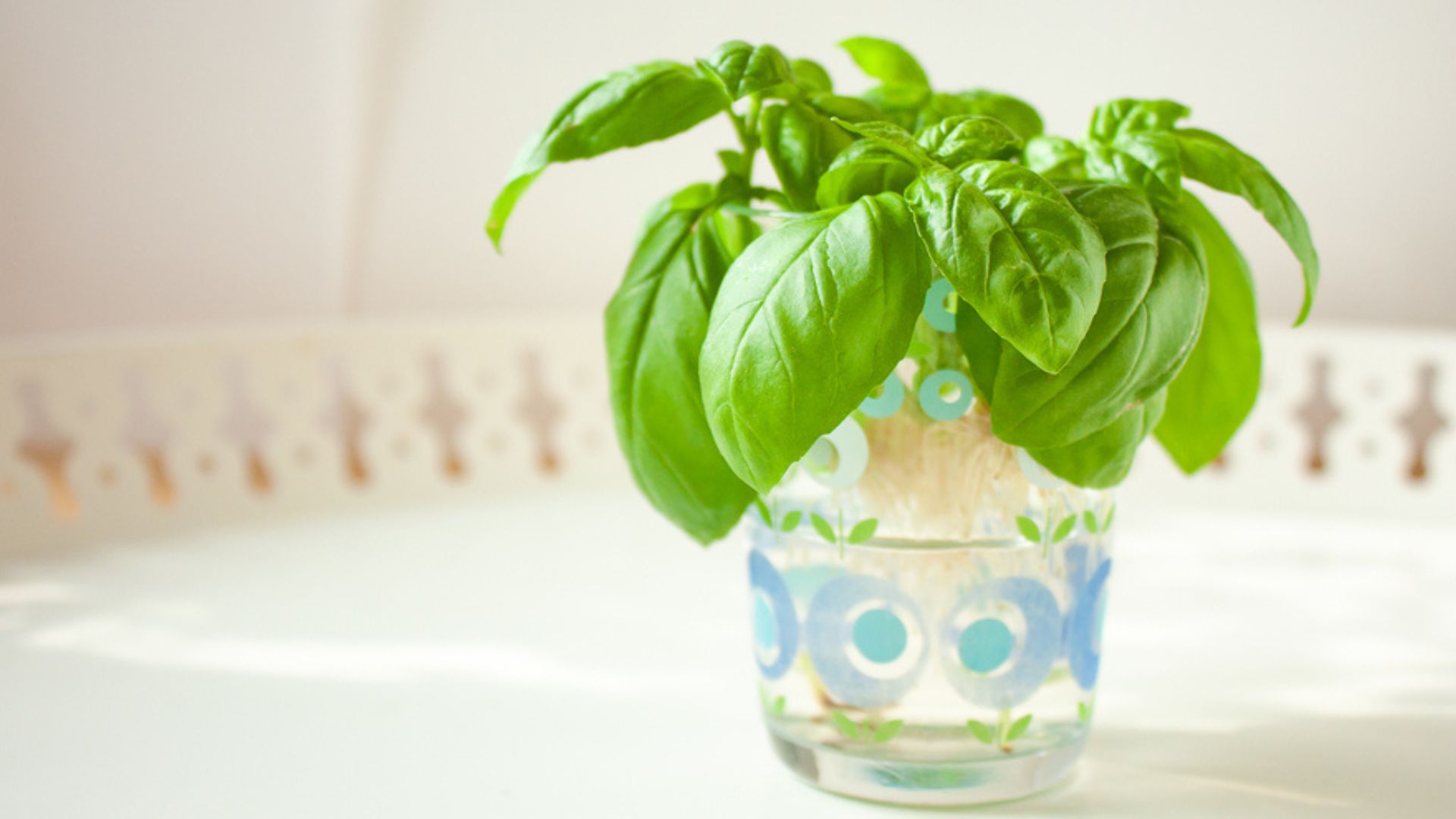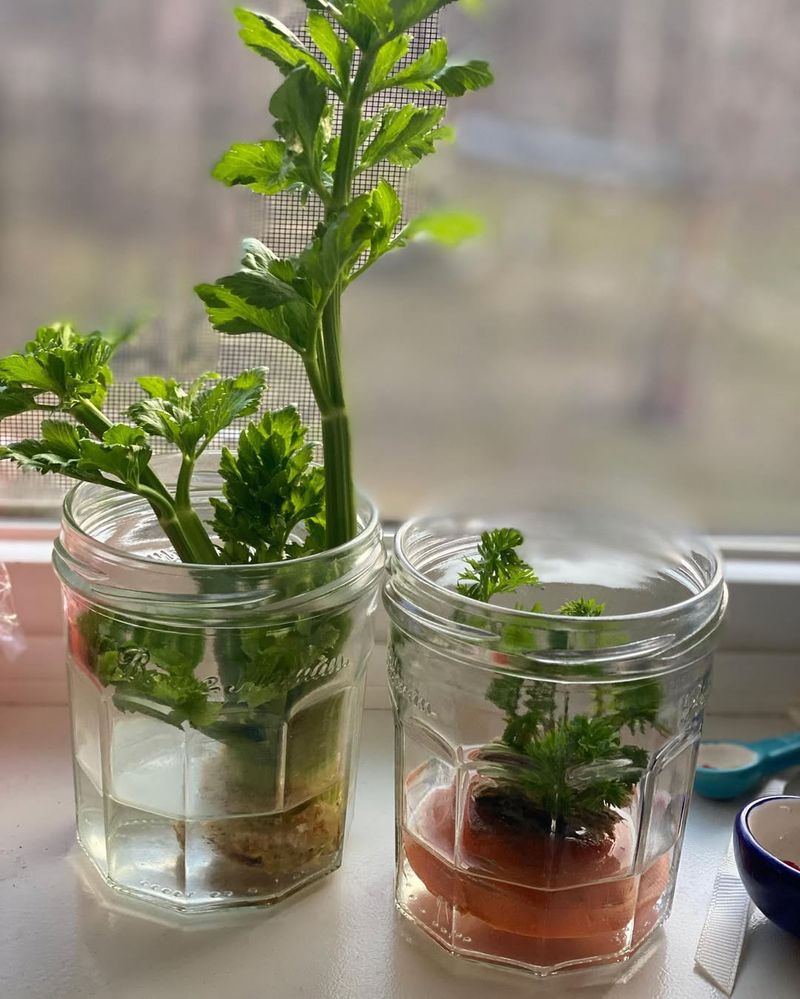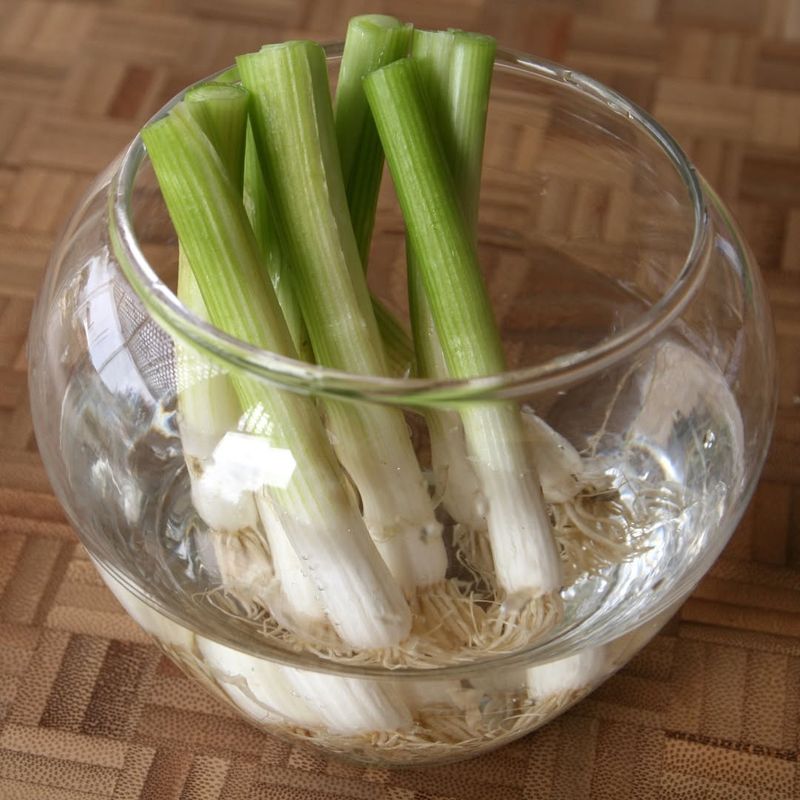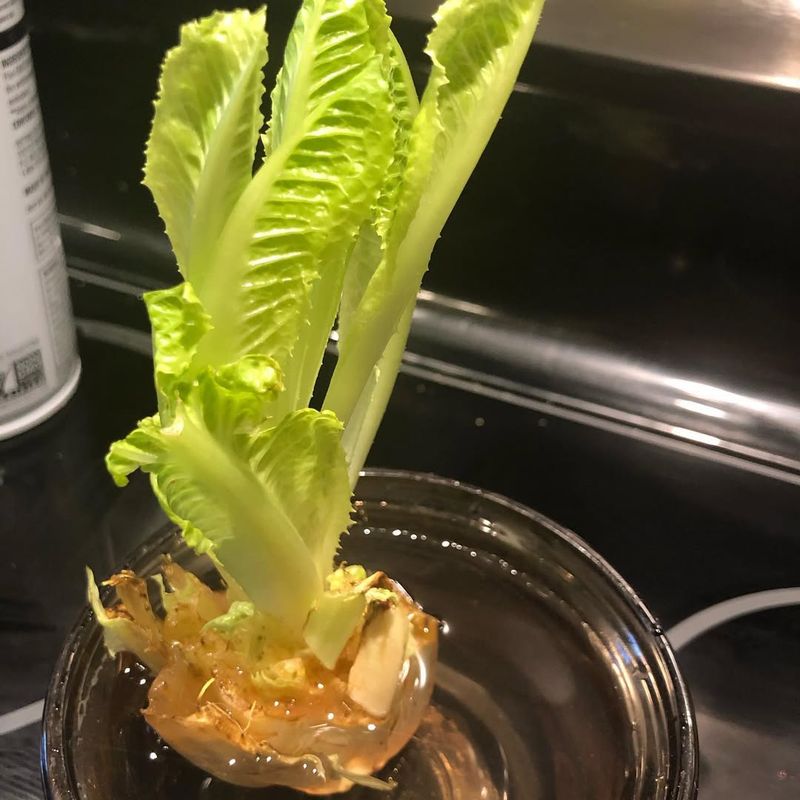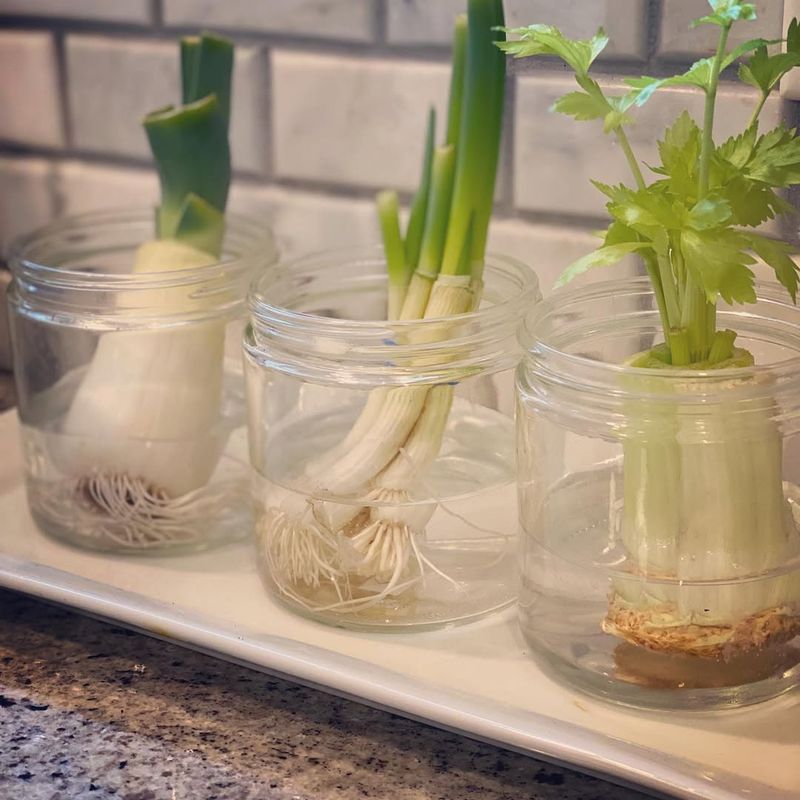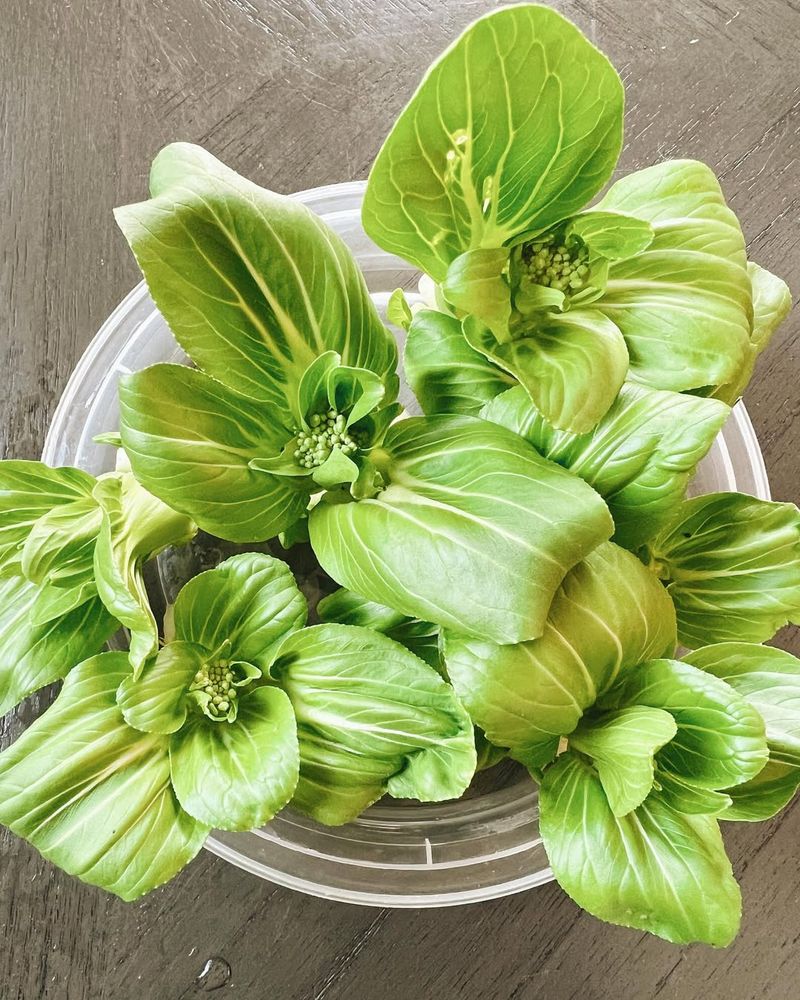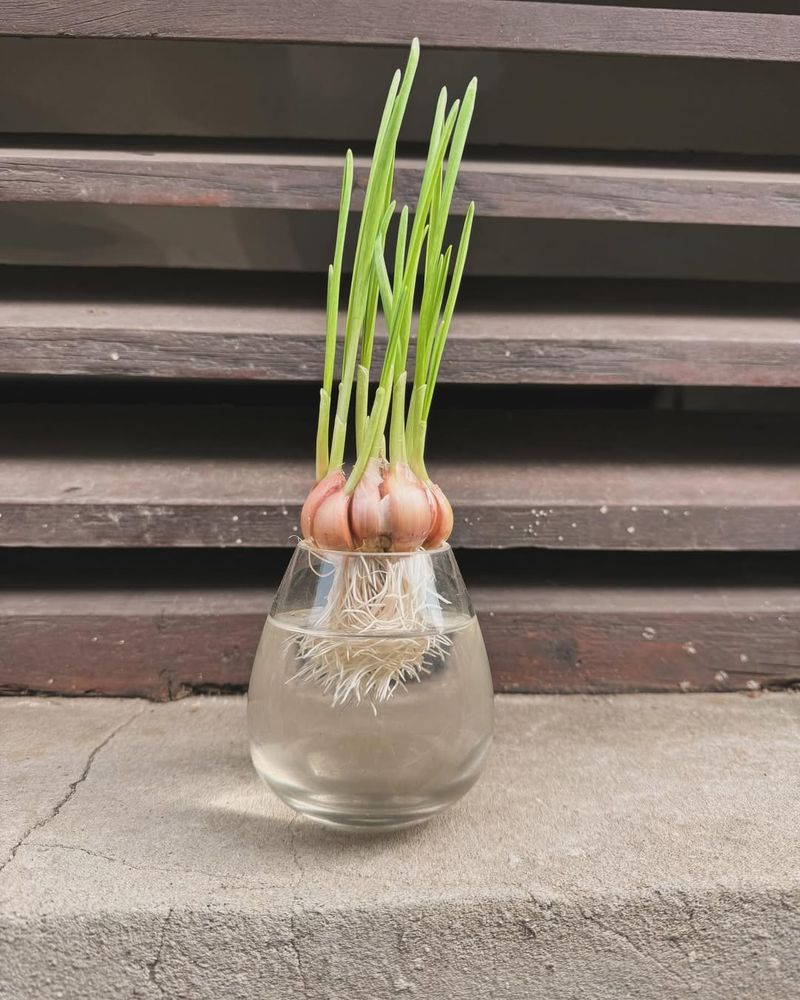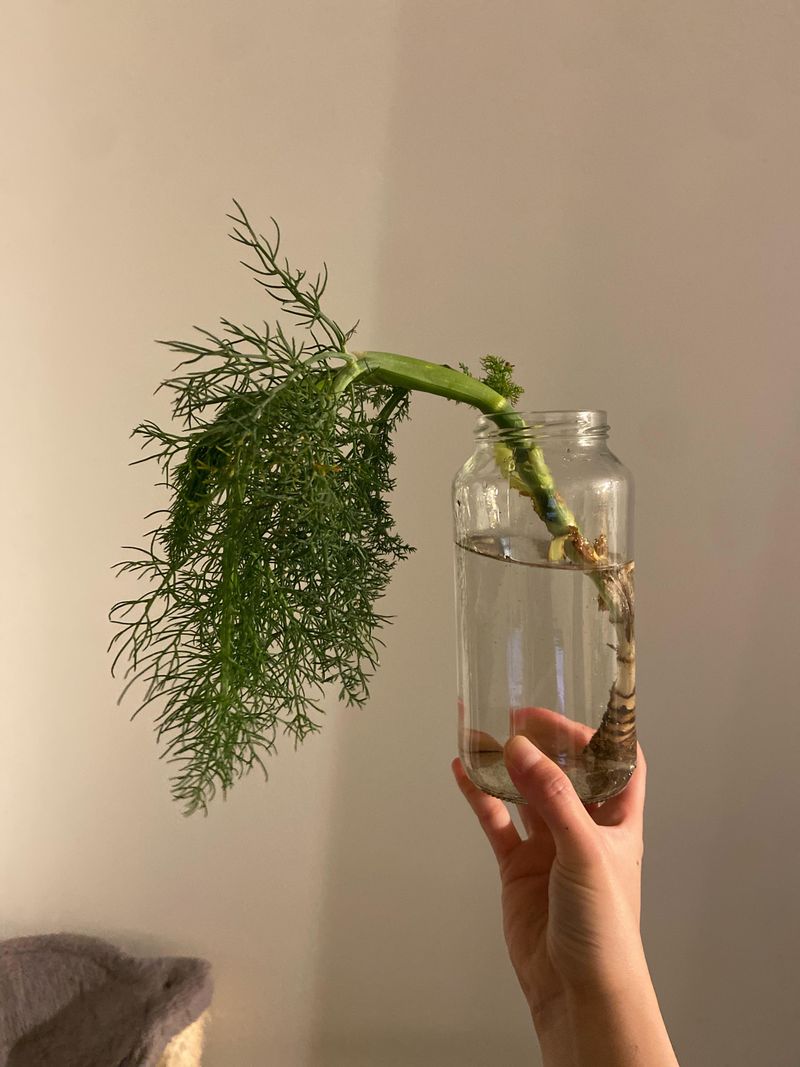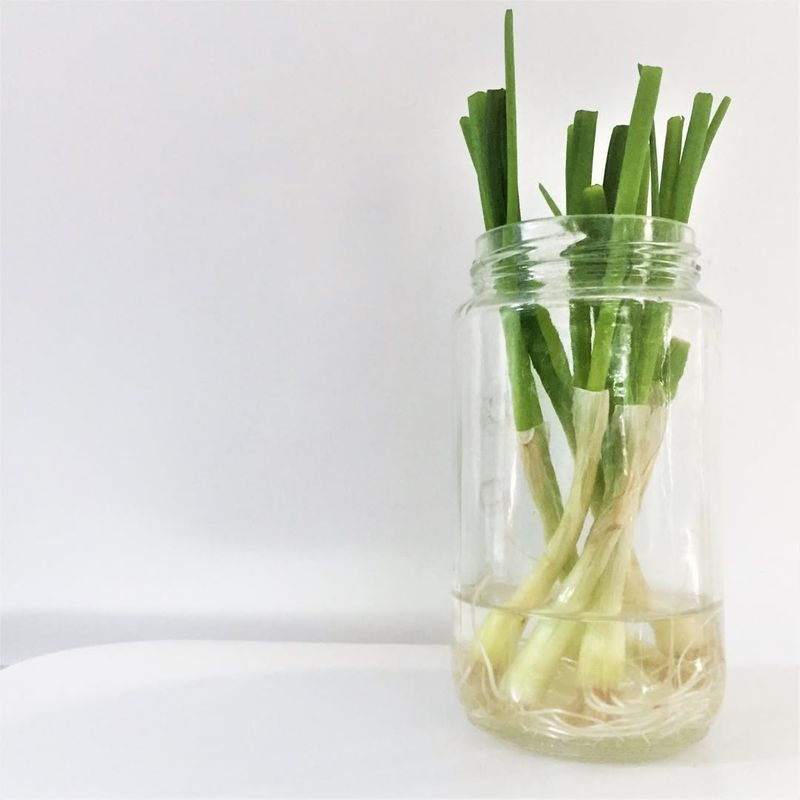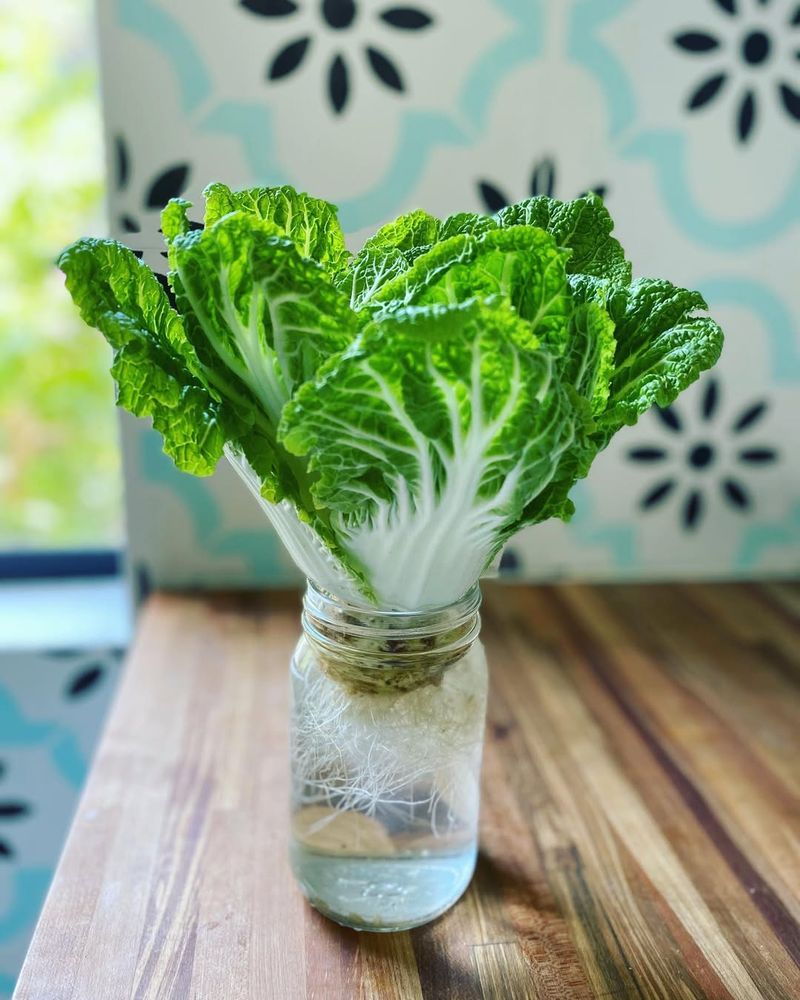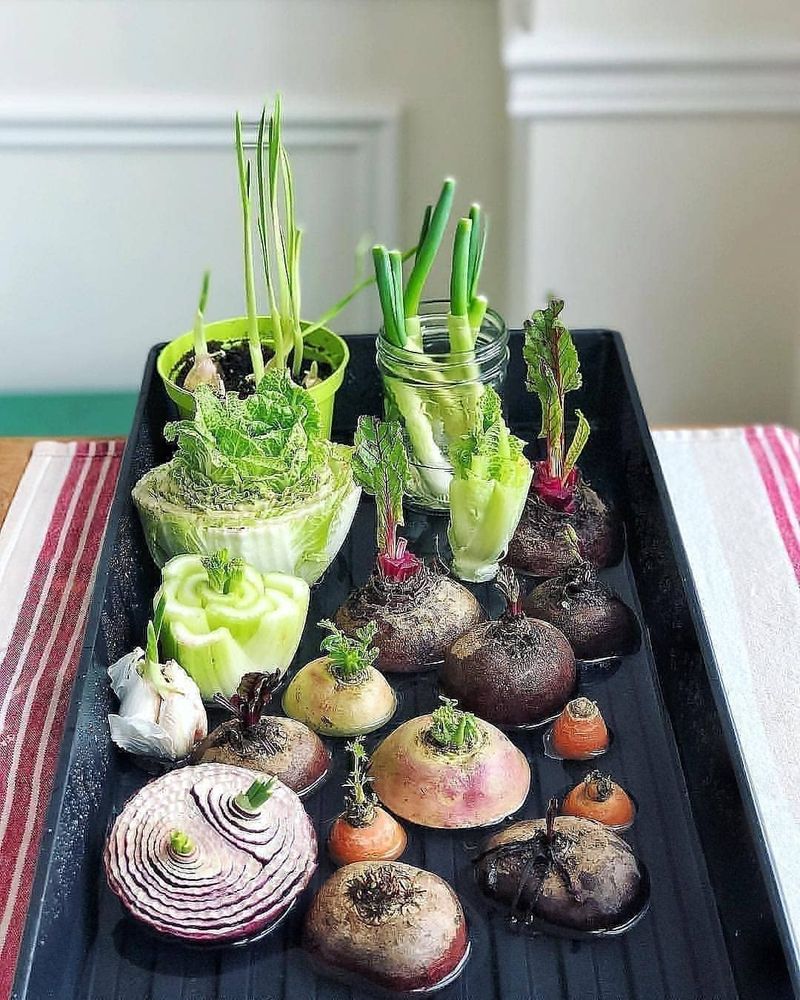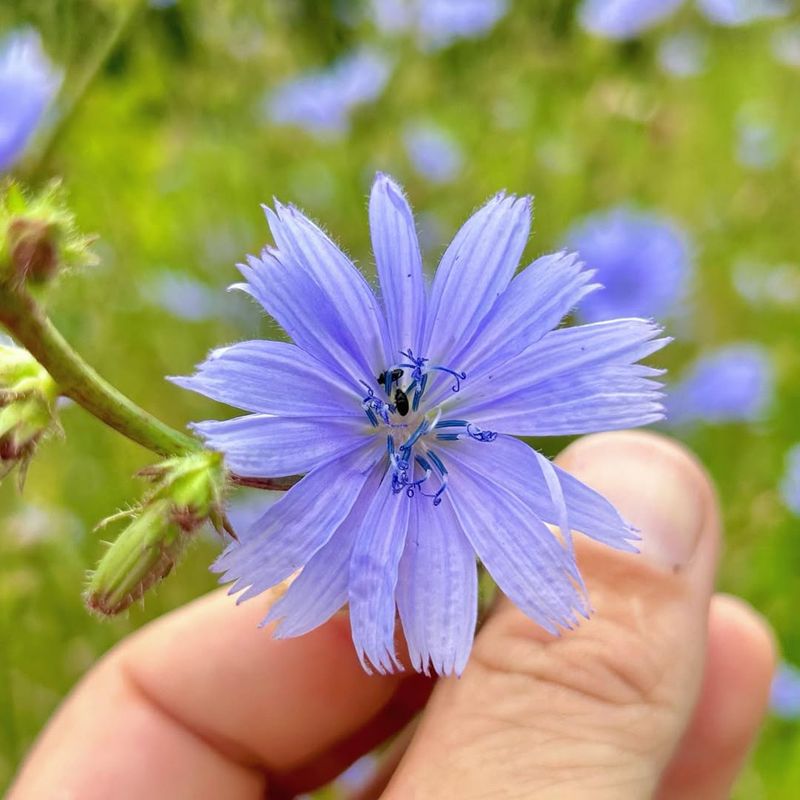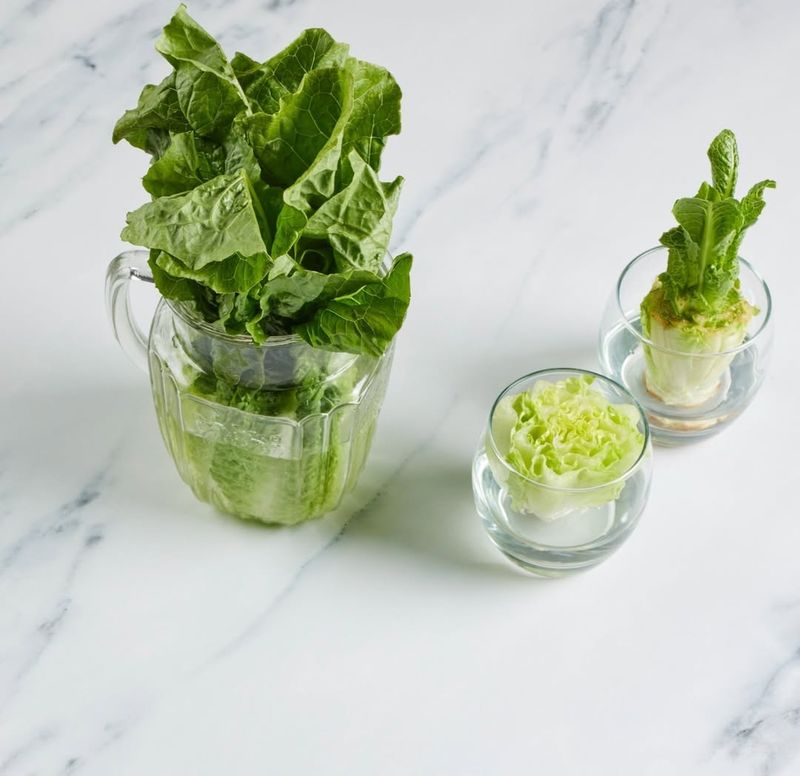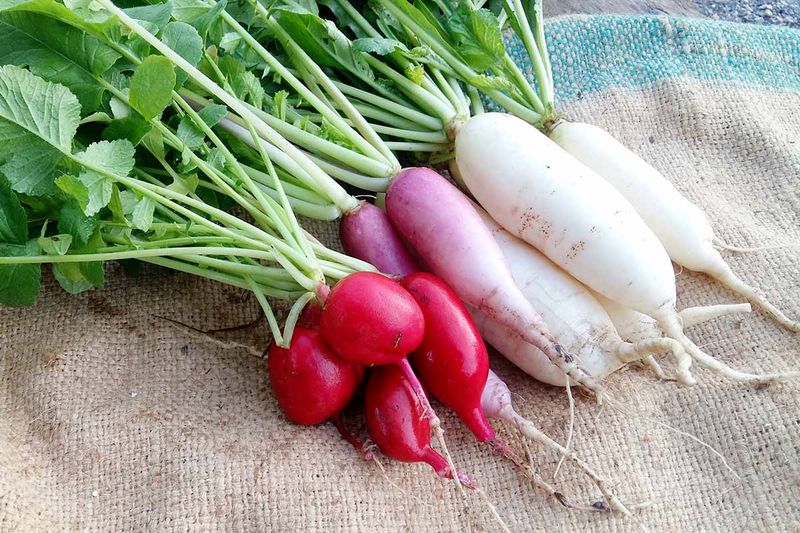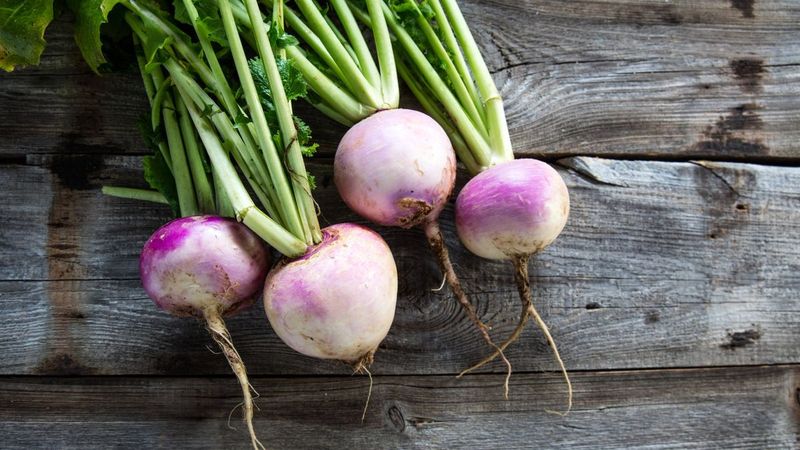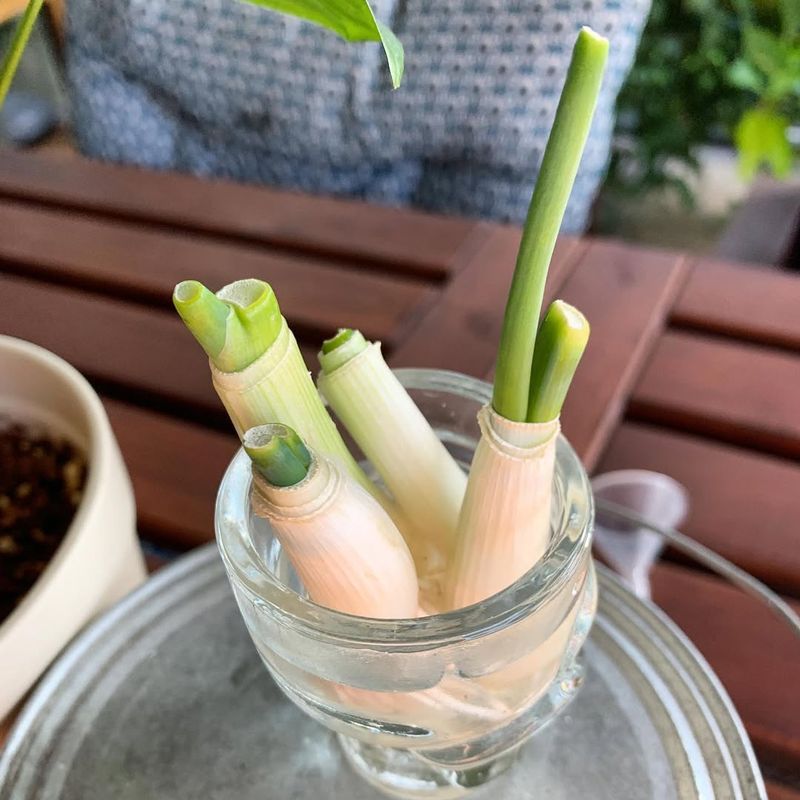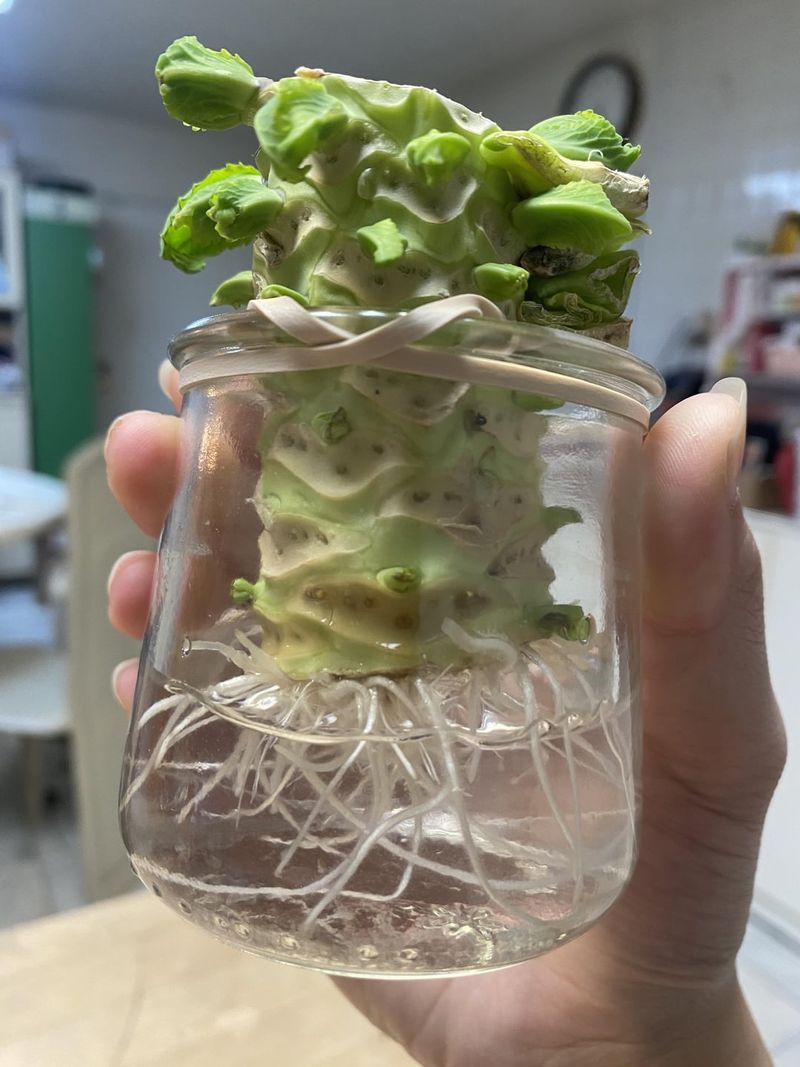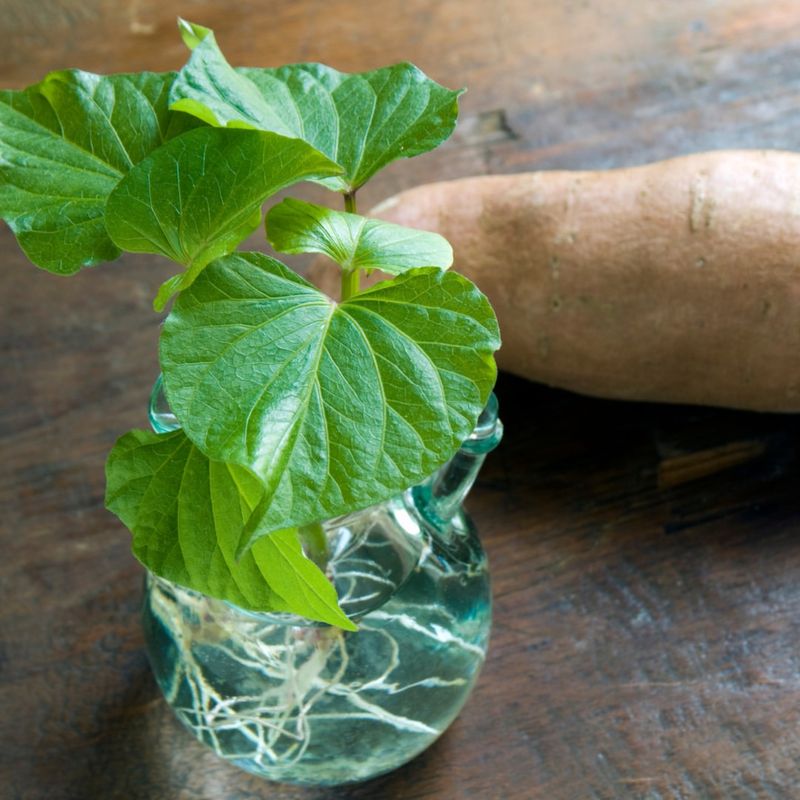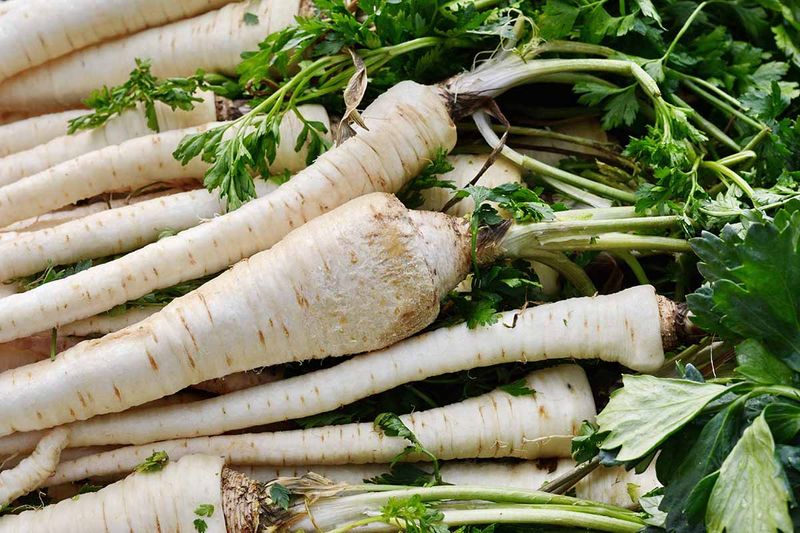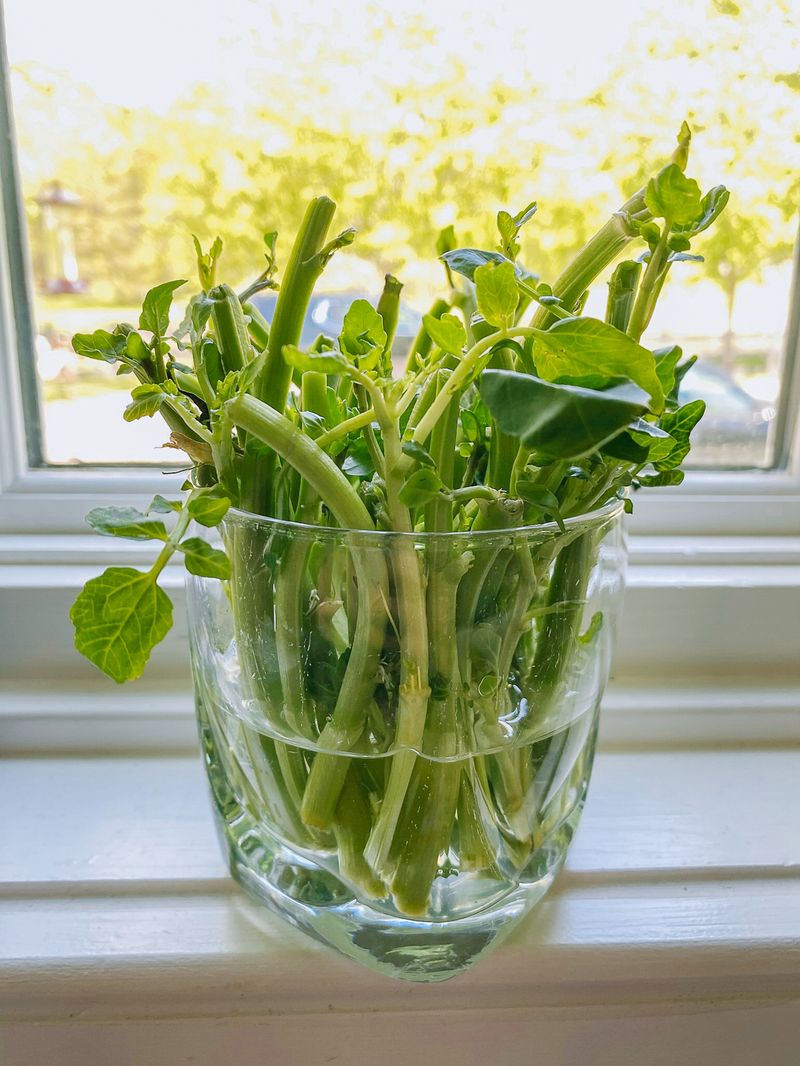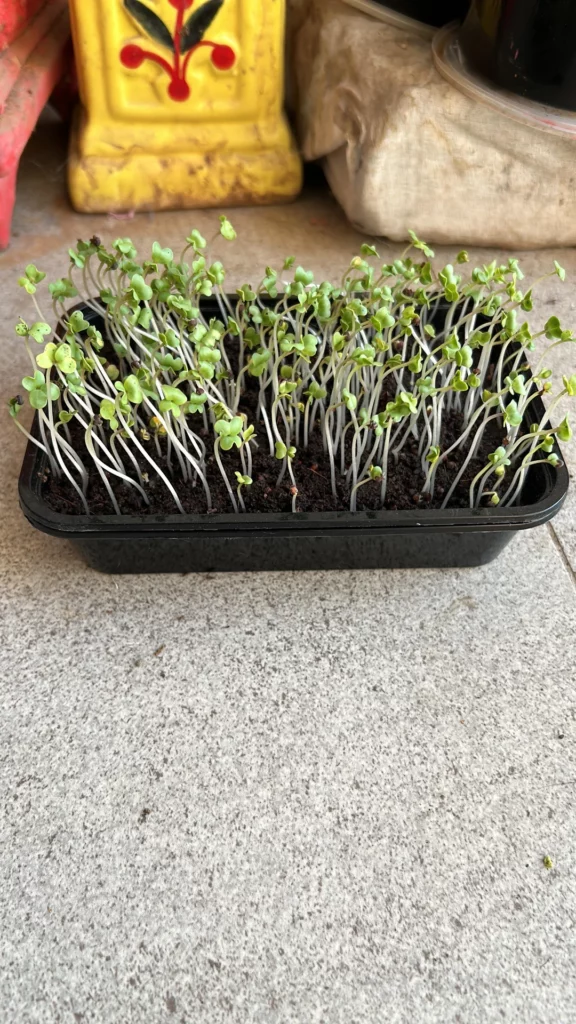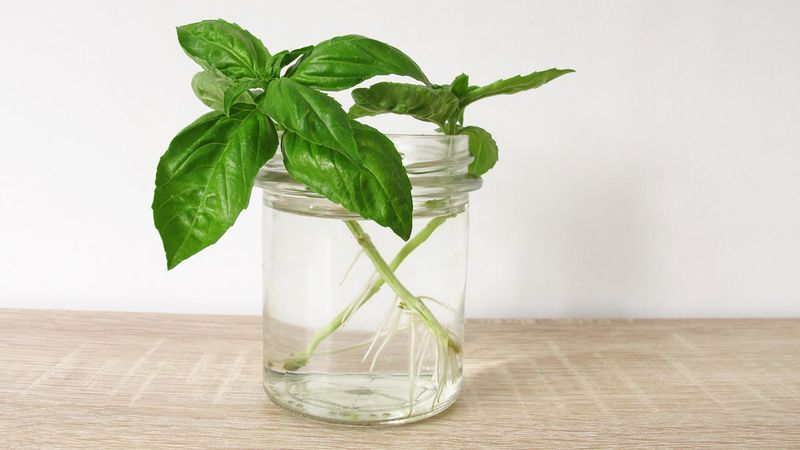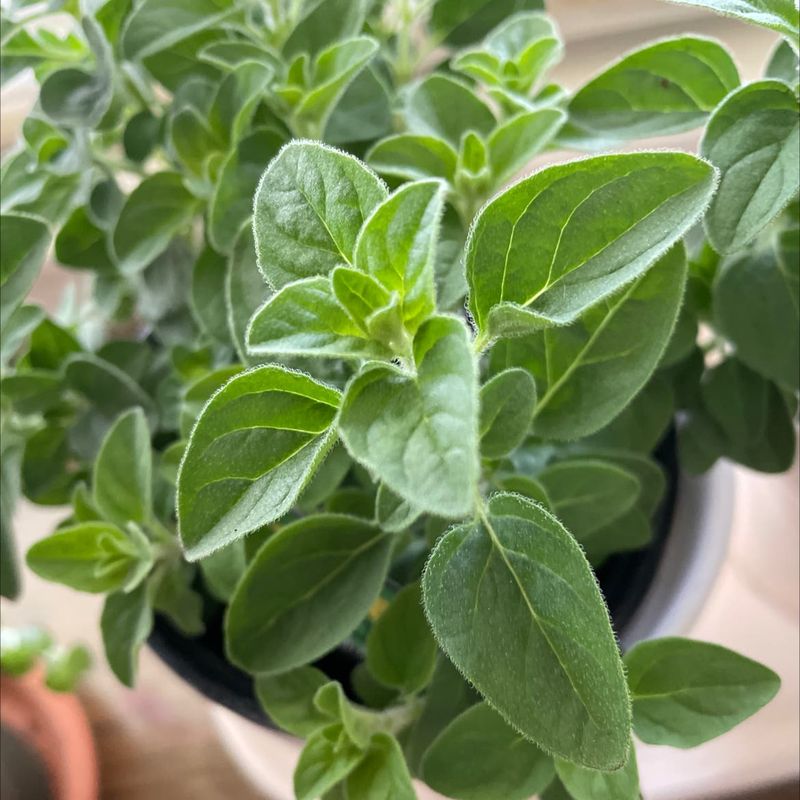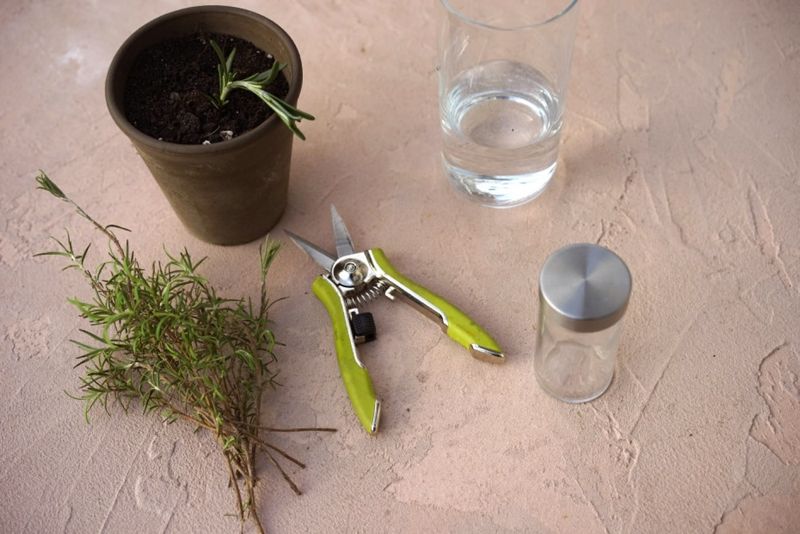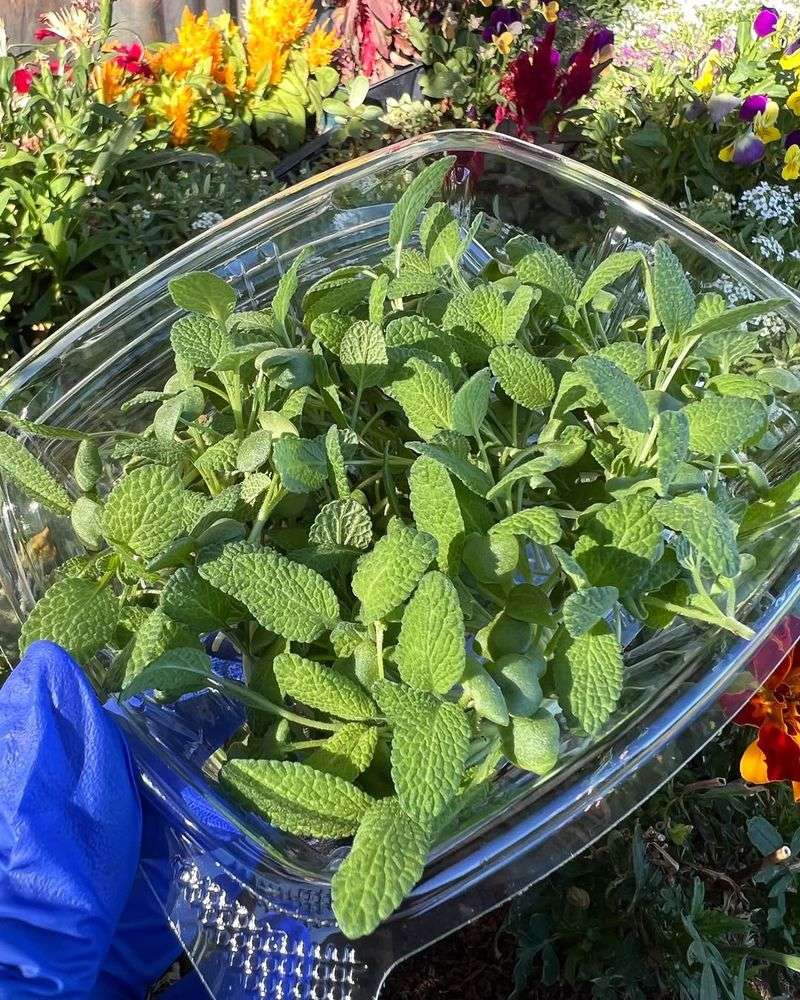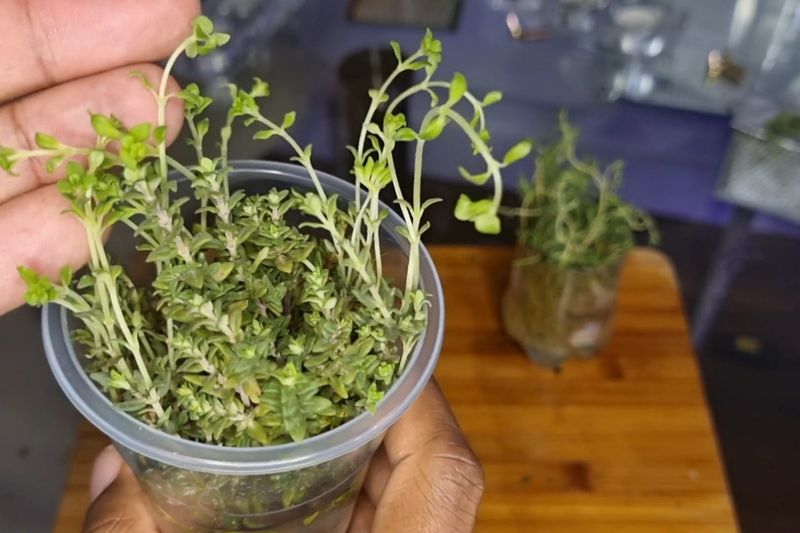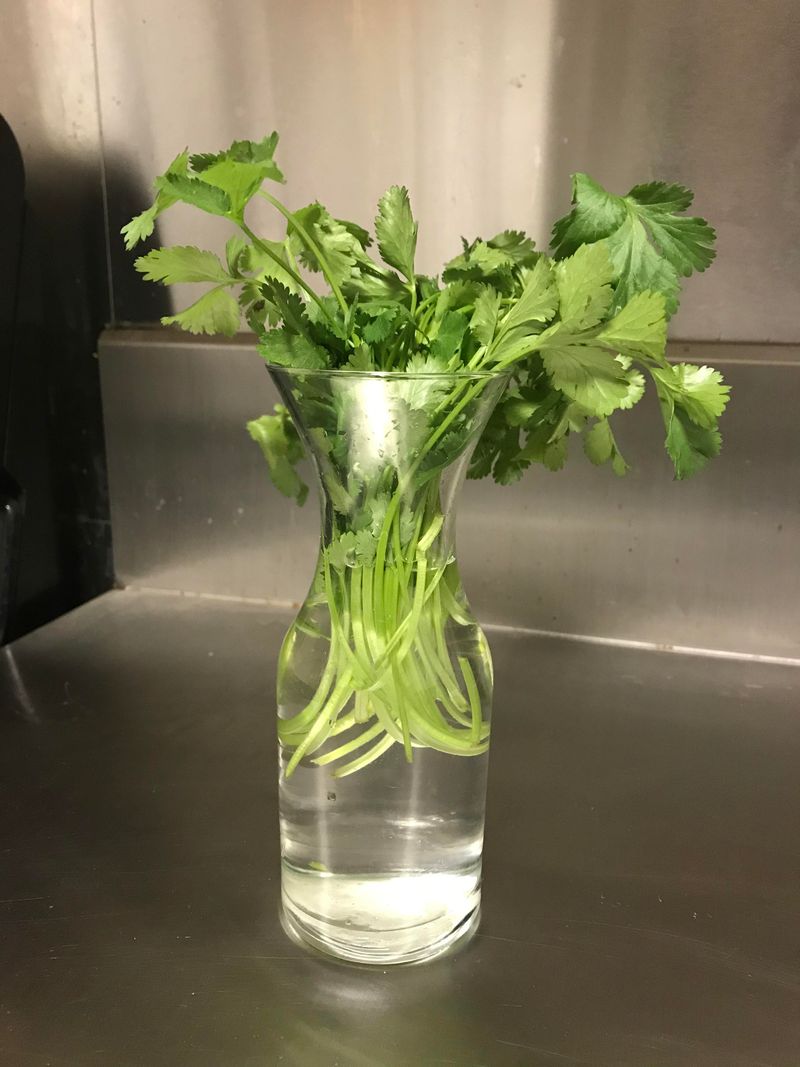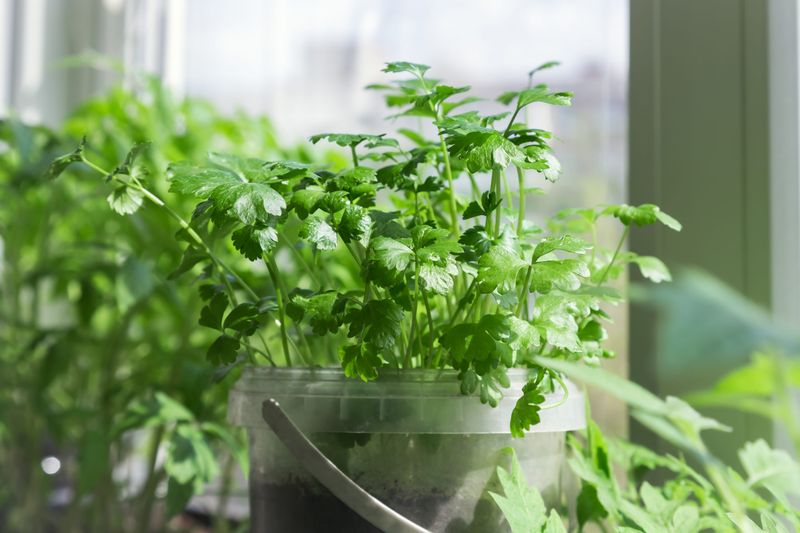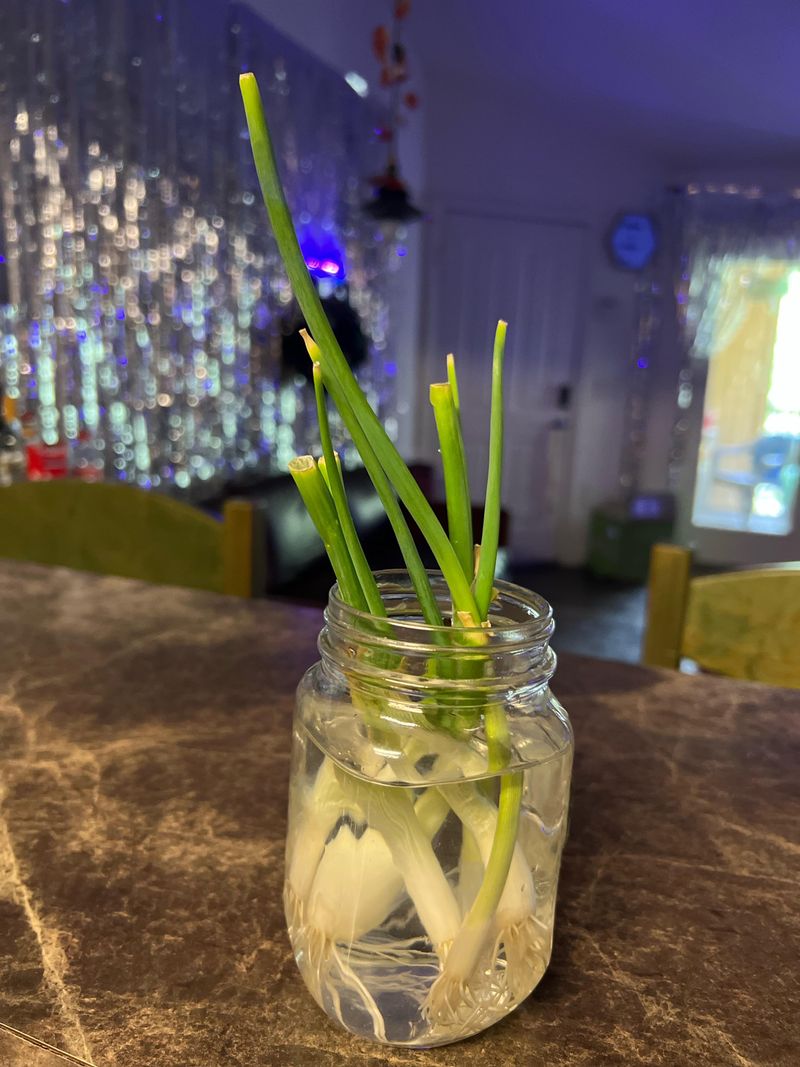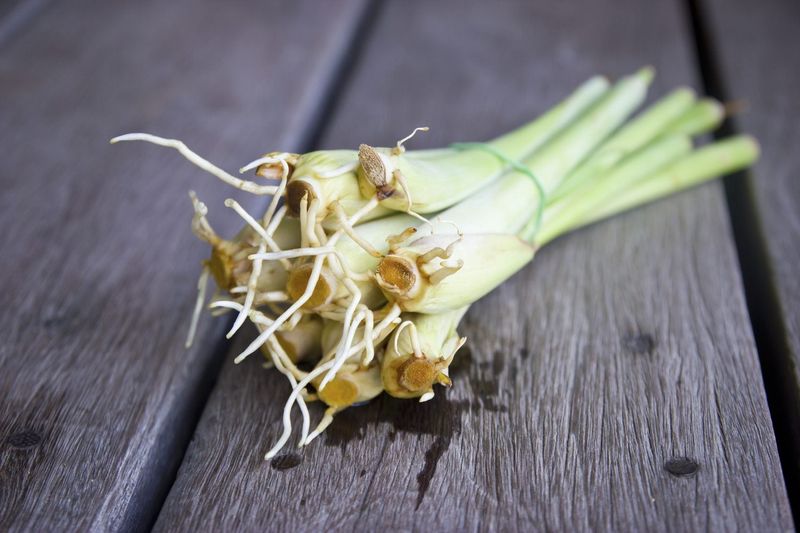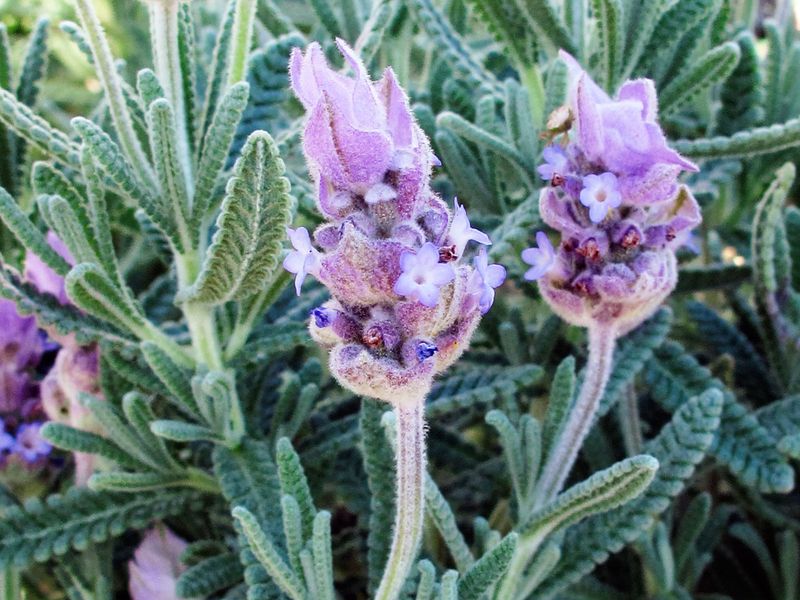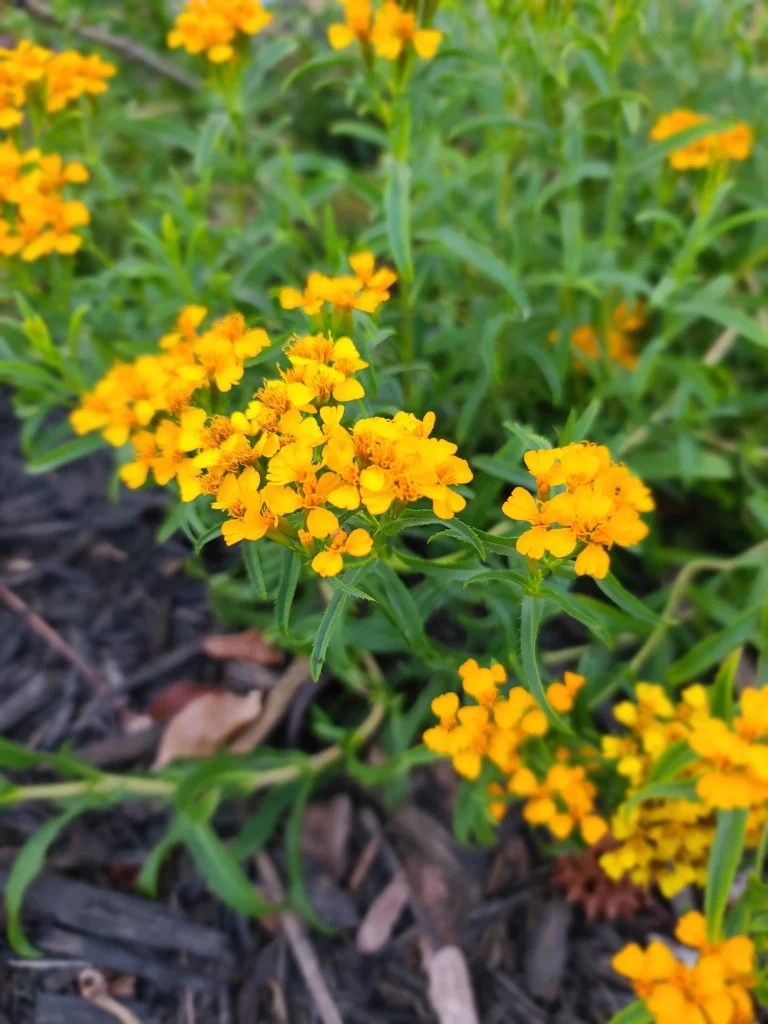Imagine the joy of seeing your kitchen become a small garden oasis, where everyday vegetables and herbs come back to life right in a glass of water. Regrowing vegetables and herbs in water is not only fun but also an excellent way to reduce waste, save money, and enjoy fresh produce at home.
All you need are some leftover scraps, a container, and a little patience. Whether you have a green thumb or are just getting started, these 32 easy-to-regrow plants will add a splash of green to your culinary space.
1. Carrots
Place these familiar orange roots in water, and watch the tops spring to life again. Carrots may not regrow the taproot but will surprise you with lush greens. These greens are edible and make a delightful addition to salads or pesto. Simply cut about an inch from the top and place it in water.
Change the water regularly to keep it fresh. You’ll find that within a few days, new growth appears, bringing a touch of nature indoors. It’s a sustainable way to enjoy this vegetable beyond its initial use.
2. Green Onions
Chop the tops for cooking, and don’t throw away the root ends. Green onions are among the easiest vegetables to regrow in water. Simply place the white ends with roots in a jar of water and watch them flourish.
Regularly change the water for best results, and soon you’ll have fresh, crisp green shoots to harvest. Their rapid growth means you can enjoy a continuous supply. Enjoy the enhanced flavor they bring to dishes, all from a simple kitchen scrap. It’s both economical and rewarding!
3. Lettuce
Reuse lettuce scraps by placing the base in water, and witness the magic of regrowth. Though it won’t form a full head again, new leaves will emerge. These are perfect for garnishing or adding to sandwiches. Ensure the water level is just right to keep the base moist without submerging the top.
Change the water every couple of days to prevent mold. It’s an easy and effective way to extend the life of your lettuce, reducing kitchen waste and keeping your meals fresh.
4. Celery
After enjoying celery stalks, the base can continue to thrive in water. Place it in a shallow dish, and soon, new stalks will appear from the center. Regular water changes are essential to prevent bacterial growth. Within a few days, the vibrant green of fresh celery will brighten your kitchen.
It provides a handy and sustainable way to have fresh celery on hand for soups, salads, and snacks. This simple process turns scraps into a productive kitchen project.
5. Bok Choy
Bok choy’s base can be revived in a bowl of water, allowing new shoots to grow. It’s exciting to see how quickly they respond, with fresh leaves unfurling within a week. Keep the water clean and fresh, and watch your bok choy thrive.
This method not only reduces waste but also offers a continuous supply of this nutritious vegetable for stir-fries and soups. Experience the joy of regrowing bok choy at home, where sustainability meets culinary creativity.
6. Garlic Sprouts
Leftover garlic cloves can sprout delightful green tops when placed in water. Though these sprouts won’t grow into a new bulb, they add a mild garlic flavor to dishes. Arrange them in a shallow dish with water and change it frequently.
The sprouting process is quick, providing a fresh garnish for salads or soups. It’s a practical way to use every part of the garlic and enhance your meals with minimal effort. Enjoy the unexpected productivity of garlic sprouts.
7. Fennel
Fennel’s unique bulb shape can continue to contribute to your meals even after initial use. By placing the base in water, elegant fronds will sprout and provide a fresh, aromatic garnish. Ensure the water is regularly changed, and you’ll have a consistent supply of fennel greens.
It’s an environmentally friendly way to enjoy this flavorful plant again. Whether used in salads or as a soup garnish, the regrown fronds offer versatility and freshness directly from your windowsill.
8. Leeks
Leeks, much like their onion relatives, can be easily regrown from the base. Place the root end in a bit of water and watch new growth appear from the center. Regularly refresh the water to maintain healthy growth. Within days, vibrant green shoots will make their way into your kitchen.
This regrowth process allows you to enjoy leeks continuously, adding their distinct flavor to your dishes. It’s both a practical and satisfying way to reduce waste and ensure a fresh supply.
9. Kale
Kale’s sturdy stems can regenerate more leafy greens when placed in water. Though it won’t form a full plant, new leaves will emerge, adding a fresh touch to your dishes. Keep the water clean and provide a sunny spot to encourage growth.
This method allows you to savor kale’s robust flavor repeatedly. It’s a sustainable practice that brings both nutrition and greenery into your home. Enjoy the ease of having fresh kale ready for your salads or smoothies.
10. Beet Greens
Beet greens are nutritious and can be revived from the tops of beetroots. Place the tops in water and watch as new greens emerge, offering a delicious addition to your meals. Regular water changes will ensure healthy growth.
The striking red and green colors add visual appeal, and their earthy flavor enhances salads and sautés. It’s a creative way to extend the life of beetroots and enjoy their benefits even after the root is used. Experience the joy of regrowing beet greens.
11. Chicory
Regrowing chicory offers a unique way to enjoy its bitter leaves again. By placing the root in water, new shoots will grow, providing a fresh supply. Regular water changes keep the plant healthy, allowing you to enjoy chicory’s distinctive flavor.
Whether used in salads or as a garnish, these regrown leaves bring variety to your meals. It’s a sustainable practice that turns kitchen scraps into a productive project. Discover the ease of having chicory greens at your fingertips.
12. Romaine Lettuce
With just the base of romaine lettuce, you can cultivate fresh leaves. Place the stump in water, and within days, new growth will appear. While it won’t recreate a full head, these leaves are perfect for salads and wraps. Change the water regularly to prevent mold and keep the plant thriving.
This practice reduces waste and ensures a fresh supply of greens. Enjoy the crisp texture and fresh taste of regrown romaine, right from your kitchen, contributing to a sustainable lifestyle.
13. Radish Tops
Don’t discard the tops of radishes; instead, place them in water and watch them grow. New leaves will sprout, offering a fresh, peppery flavor. Regularly change the water to maintain healthy growth. These greens are not only edible but also a tasteful addition to salads and garnishes.
It’s a creative way to enjoy radishes beyond their initial crunch. By regrowing the tops, you contribute to a more sustainable kitchen and experience the delight of seeing new life form from leftovers.
14. Turnip Greens
Turnip greens are easy to regrow from the tops of turnips. Place the tops in water and witness new greens thrive. Change the water frequently to ensure healthy development. These greens bring a unique bitter flavor that enhances many dishes.
Incorporate them into salads or sautés for an added nutritional boost. It’s an economical way to make the most of your turnips, turning what might be waste into fresh, edible greens. Enjoy the simplicity and satisfaction of regrowing turnip tops.
15. Scallions
Scallions are remarkably easy to regrow from their bases. Simply place the white root ends in water, and watch them regenerate. Within days, you’ll have fresh, crisp scallion greens ready to use. Regular water changes are essential for optimal growth.
This method provides a continuous supply, reducing the need to purchase new ones. It’s a practical and satisfying way to enjoy scallions, adding flavor and freshness to your culinary creations. Embrace the ease of regrowing scallions in your kitchen.
16. Cabbage
The core of cabbage can regrow tender new leaves when placed in water. Though it won’t form a complete head, these leaves are perfect for garnishes or light salads. Keep the water clean and refresh it often to prevent rot.
This easy regrowth process allows you to enjoy cabbage repeatedly, contributing to a waste-free kitchen. Experiment with different varieties, and discover the joy of having fresh cabbage leaves at your disposal, all from a simple kitchen scrap.
17. Sweet Potato Leaves
Sweet potatoes offer more than just the starchy root; their leaves can regrow beautifully in water. Place halves in a jar, and soon you’ll see vines and leaves appear. These greens are edible and provide a unique flavor to dishes. Regular water changes ensure healthy growth.
It’s an inventive way to make use of the whole sweet potato, bringing both beauty and utility to your kitchen. Explore the culinary possibilities with sweet potato leaves, fresh from your windowsill.
18. Parsnip Greens
Parsnip tops are perfect for regrowth, offering fresh greens when placed in water. Watch as delicate fronds emerge, bringing a mild, sweet flavor to your dishes. Regularly refresh the water for optimal growth. These greens make a lovely addition to salads or as a garnish.
It’s an eco-friendly way to extend the life of parsnips and enjoy their benefits anew. Embrace the simplicity and satisfaction of regrowing parsnip tops, adding a touch of freshness to your meals.
19. Watercress
Watercress can thrive in water, providing a fresh supply of peppery greens. Place stems in a container with water and watch them flourish. Change the water regularly to maintain growth. These greens are ideal for salads or as a garnish, offering both flavor and nutrition.
It’s an easy and sustainable way to keep watercress on hand, reducing waste and enhancing your dishes. Experience the joy of having fresh watercress available, right from your kitchen counter.
20. Mustard Greens
Mustard greens can easily be regrown from their stems. After enjoying the leaves, place the remaining stem in water, and watch as fresh, spicy greens begin to emerge.
Change the water regularly to ensure healthy growth. These vibrant greens add a zesty kick to salads, sandwiches, or stir-fries.
By regrowing mustard greens, you’re not only reducing waste but also enjoying a continual supply of this nutrient-packed vegetable. It’s a simple and sustainable way to keep fresh greens on hand for your meals, bringing both flavor and a sense of accomplishment to your kitchen.
21. Basil
Basil is a versatile herb that can be regrown from its stems. Place them in water, and soon you’ll see new roots and leaves appearing. Change the water every few days to keep it fresh and healthy. This method allows you to have a continuous supply of basil, perfect for adding flavor to a variety of dishes.
Enjoy the aromatic scent and vibrant taste that regrown basil brings to your kitchen, making it both a practical and delightful addition to your culinary routine.
22. Mint
Mint’s refreshing flavor can be easily regrown from stem cuttings. Place the stems in water, and within days, you’ll see new roots forming. Regularly change the water to ensure healthy growth. This method provides a sustainable supply of mint, perfect for teas, desserts, or as a garnish.
Enjoy the invigorating aroma and taste of fresh mint, right from your windowsill. It’s a simple and rewarding way to keep this versatile herb on hand, adding zest to your culinary creations.
23. Oregano
Oregano, with its robust flavor, can be regrown from stem cuttings in water. Place the stems in a container with water, and watch as new roots develop. Change the water regularly to promote healthy growth. This method ensures a fresh supply of oregano, ideal for cooking and seasoning.
Enjoy the convenience and satisfaction of regrowing this herb, adding depth and warmth to your dishes. It’s a delightful way to keep oregano at the ready in your kitchen.
24. Rosemary
Regrowing rosemary from stem cuttings provides a continual supply of this aromatic herb. Place stems in water, ensuring regular changes for optimal growth. Watch as new roots and leaves appear, ready to enhance your culinary creations.
Rosemary’s robust flavor is perfect for roasting meats, vegetables, or infusing oils. Enjoy the convenience and freshness of having rosemary readily available, bringing both fragrance and taste to your kitchen. It’s a sustainable and rewarding way to enjoy this classic herb.
25. Sage
Sage can be regrown from cuttings placed in water, providing a fresh supply of this flavorful herb. Ensure regular water changes to promote healthy growth. Within weeks, new roots and leaves will appear, ready to add depth and aroma to your dishes.
Ideal for seasoning poultry, meats, or stuffing, sage’s distinctive taste is a valuable addition to your culinary repertoire. Experience the ease and satisfaction of regrowing sage, maintaining a sustainable supply right in your kitchen.
26. Thyme
Thyme, with its delicate leaves, can be regrown from stem cuttings in water. Place them in a container and change the water regularly to encourage growth. Within days, new roots and leaves will emerge, offering a fresh supply for your cooking needs.
Thyme’s subtle flavor enhances a wide range of dishes, from sauces to roasts. Enjoy the practicality and pleasure of having thyme on hand, ready to infuse your meals with its aromatic charm. It’s a sustainable way to keep this herb alive.
27. Cilantro
Cilantro, known for its fresh and tangy flavor, can be regrown from stems placed in water. Regularly change the water for healthy growth, and soon new roots and leaves will appear. This method provides a sustainable supply, perfect for garnishing and enhancing a variety of dishes.
Enjoy the vibrant taste and aroma of fresh cilantro, straight from your kitchen window. It’s a simple and rewarding way to keep this versatile herb at hand, enriching your culinary adventures.
28. Parsley
Parsley’s bright, fresh flavor can be easily regrown from cuttings in water. Place the stems in a container, and change the water every few days to promote healthy growth. Watch as new roots and leaves develop, providing a continuous supply for your culinary needs.
Perfect for garnishing or flavoring dishes, parsley’s versatility makes it a staple in any kitchen. Enjoy the convenience and satisfaction of having fresh parsley ready to use, contributing to a more sustainable lifestyle.
29. Chives
Chives, with their mild onion flavor, can be regrown from cuttings submerged in water. Place the cuttings in a glass, and change the water regularly for optimal growth. New roots and greens will soon appear, offering a fresh supply for garnishes and flavoring.
Chives add a delicate touch to dishes, from salads to egg recipes. Embrace the ease and satisfaction of regrowing chives, keeping this versatile herb available at your fingertips, ready to enhance your culinary creations.
30. Lemongrass
Lemongrass can be regrown from stalks placed in water, providing a fresh supply of this aromatic herb. Regularly change the water to encourage growth, and soon new roots and leaves will appear. Lemongrass adds a zesty flavor to a variety of dishes, from soups to teas.
Enjoy the convenience of having fresh lemongrass on hand, right from your kitchen. It’s a practical and satisfying way to keep this herb available, enhancing your culinary experiences with its unique citrusy aroma.
31. Lavender
Lavender, known for its aromatic scent, can be regrown from cuttings in water. Ensure regular water changes for healthy development, and watch as new roots and leaves appear. While lavender is often used for aromatherapy and decoration, it can also add a floral note to culinary creations.
Enjoy the soothing presence and versatile use of regrown lavender, right from your kitchen. This practice not only reduces waste but also brings a touch of nature’s beauty into your home.
32. Tarragon
Tarragon, with its unique anise-like flavor, can be regrown from stem cuttings in water. Place the cuttings in a glass of water, and change it every few days to maintain healthy growth.
In no time, you’ll see new roots and leaves developing, providing a fresh supply for your culinary needs. Tarragon is perfect for seasoning chicken, fish, or adding a distinctive touch to sauces and dressings.
Regrowing this herb ensures you always have a fresh and aromatic supply ready to elevate your dishes with its sweet, slightly peppery flavor.

